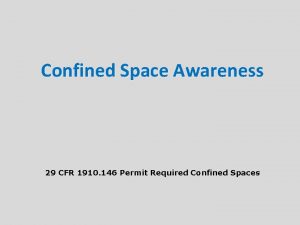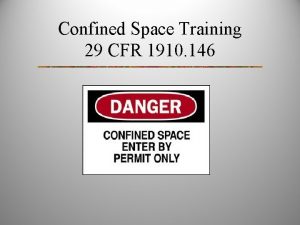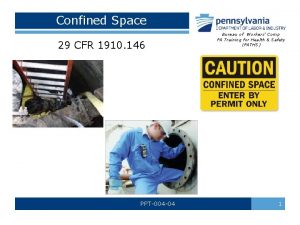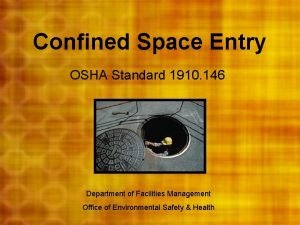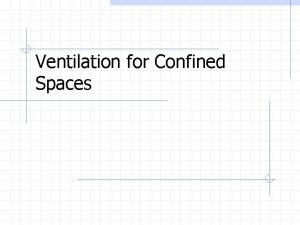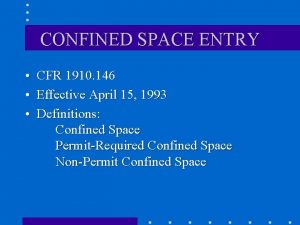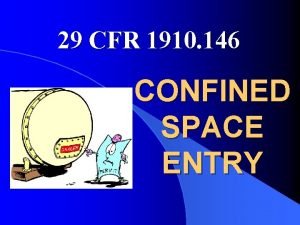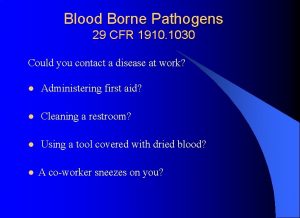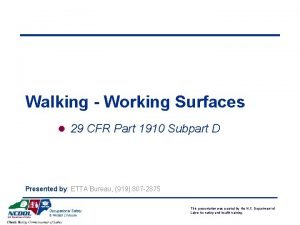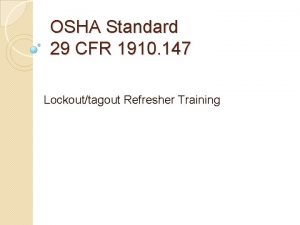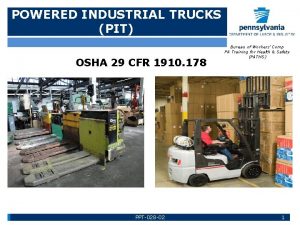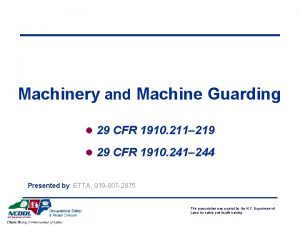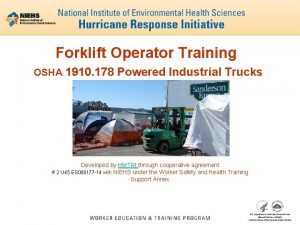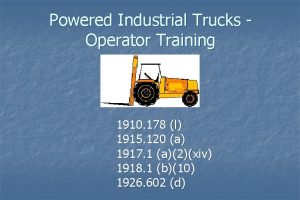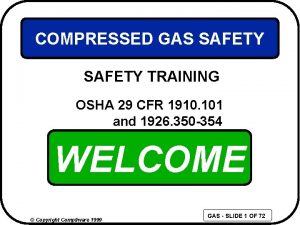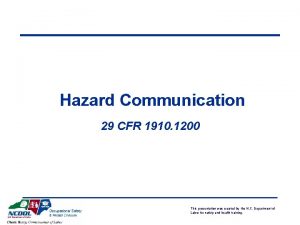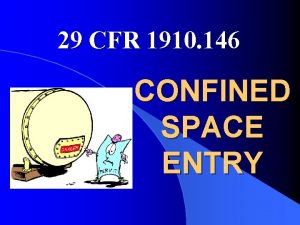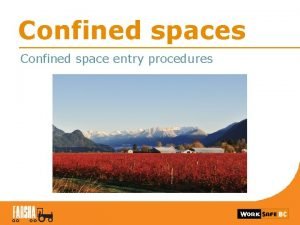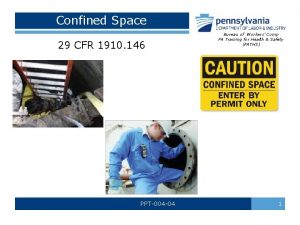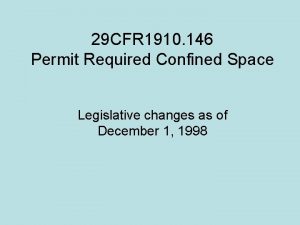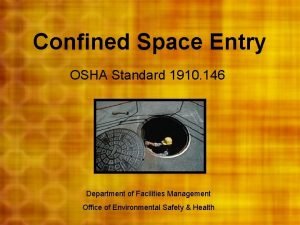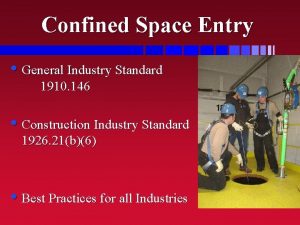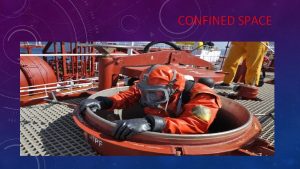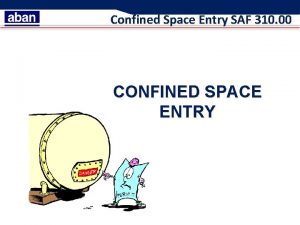CONFINED SPACE ENTRY CFR 1910 146 Effective April

















- Slides: 17

CONFINED SPACE ENTRY • CFR 1910. 146 • Effective April 15, 1993 • Definitions: Confined Space Permit-Required Confined Space Non-Permit Confined Space

CONFINED SPACE • Has limited openings for entry or exit. • Is large enough for human occupancy but not meant for human occupancy. • Lacks natural ventilation. • May contain a hazardous atmosphere. • Has the potential for engulfment. • Has a recognized, serious safety or health hazard.

PERMIT REQUIRED CS • A space that meets the definition of a confined space and has one or more of these characteristics: 1. The potential to contain a hazardous atmosphere. 2. Contains a material that has the potential for engulfing an entrant.

Permit Required CS, continued • Has an internal configuration that may cause an entrant to become entrapped. • Contains a serious safety or health hazard.

NON-PERMIT CS • Does not contain, or have the potential to contain, an atmospheric hazard or hazard capable of causing death or serious physical harm. • A confined space is considered a Permit required confined space until pre-entry procedures prove otherwise. (air monitoring, for example. )

List of Confined Spaces • • Silo Manhole Tank spill containment Etc. .

Requirements of the Standard • Employers must evaluate the workplace to determine if spaces are permit required confined spaces. (consult chart) • Employer must inform employees. • Written Program. • Permit System. • Training and Education

Requirements, continued • Equipment: 1. Testing and Monitoring 2. Rescue 3. PPE 4. Communications 5. Ventilating

Requirements, continued • Contractor requirements: 1. Inform of rules and hazards. 2. Equipment. 3. Notice to employer of any hazards being brought on employer’s site.

SIX STEPS TO SAFE CONFINED SPACE ENTRY • • • Identify the Space Permit the Space Isolate the Space Ventilate the Space Test the Space Equip the Space

ID the SPACE • Is it a Confined Space? • Permit or Non-Permit?

PERMIT the SPACE • Follow Permit Guidelines (see permit) • Names and Signatures of Team • Name and Signature of Supervisor

ISOLATE the SPACE • “DE-ENERGIZE” (mechanical, pneumatic, hydraulic, gravity, pressure, etc. ) • “BIG FIVE” PROCEDURES 1 - Permit 2 - Hot Work 3 - LOTO 4 - Confined Space Entry 5 - Linebreak (Purge)

VENTILATE the SPACE • Mechanical Ventilation before and after Testing • During Entry

TEST the SPACE • • Monitor for Oxygen (19. 5%-23. 5%) Monitor for LEL Test for other Contaminants Test at ALL LEVELS!

EQUIP the SPACE • Permits should list all equipment and tools necessary for Entry and Rescue

SUMMARY • OSHA has a CS Standard because of the continuing fatalities in confined spaces. The biggest killer involving confined spaces is lack of knowledge. Education, a written plan, and enforcement of rules can eliminate confined space fatalities.
 1910-146
1910-146 Confined space 1910
Confined space 1910 1910 confined space
1910 confined space Confined space 1910
Confined space 1910 What gas is heavier than air
What gas is heavier than air Osha 1910 confined space
Osha 1910 confined space 1910-146
1910-146 29 cfr 1910 1030
29 cfr 1910 1030 Every open sided floor or platform
Every open sided floor or platform Osha 1910 lockout tagout
Osha 1910 lockout tagout 29 cfr 1910
29 cfr 1910 Cfr 29 1910
Cfr 29 1910 29 cfr 1910 powered industrial trucks
29 cfr 1910 powered industrial trucks 29 cfr 1910 powered industrial trucks
29 cfr 1910 powered industrial trucks 29 cfr 1910 osha 178
29 cfr 1910 osha 178 29 cfr 1910.
29 cfr 1910. 29 cfr 1910 compressed gas cylinder storage
29 cfr 1910 compressed gas cylinder storage 29cfr1910.1200
29cfr1910.1200
